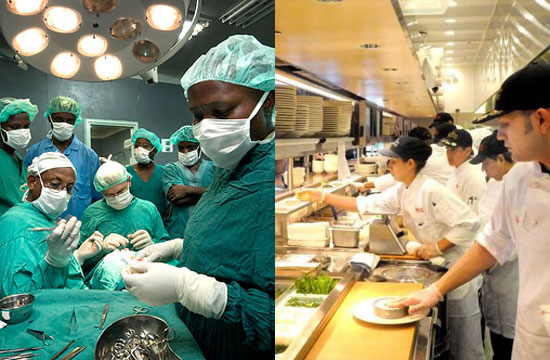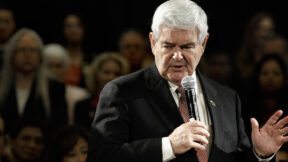New Yorker Writer Thinks Hospitals Could Learn A Few Lessons From The Cheesecake Factory
 Congratulations, Atul Gawande! You wrote an incredible article for the New Yorker that draws a parallel between two of the most controversial institutions in America today: our nation’s bloated hospital system, and The Cheesecake Factory.
Congratulations, Atul Gawande! You wrote an incredible article for the New Yorker that draws a parallel between two of the most controversial institutions in America today: our nation’s bloated hospital system, and The Cheesecake Factory.
While both of these entities normally inspire ideological conflict and much gnashing of the teeth, Gawande, who also practices medicine at Brigham and Women’s Hospital, points out that the very thing that food adherents loathe about The Cheesecake Factory — their assembly line-like approach to food, the enforced quality standard throughout the chain, the crowds of people efficiently moving through a single restaurant at any time — is a quality health care advocates desperately want to replicate in hospitals.
As he visits a high-volume Cheesecake Factory in Boston, Gawande watches Mauricio Gaviria, a broiler man, turn out fourteen orders at once, and marvels that each dish passes corporate muster. But when he learns that the entire corporation threw out no more than 2.5% of all the groceries they bought — a 97.5% efficiency rate — Gawande found such control “alien.”
In medicine, too, we are trying to deliver a range of services to millions of people at a reasonable cost and with a consistent level of quality. Unlike the Cheesecake Factory, we haven’t figured out how. Our costs are soaring, the service is typically mediocre, and the quality is unreliable. Every clinician has his or her own way of doing things, and the rates of failure and complication (not to mention the costs) for a given service routinely vary by a factor of two or three, even within the same hospital.
It’s easy to mock places like the Cheesecake Factory—restaurants that have brought chain production to complicated sit-down meals. But the “casual dining sector,” as it is known, plays a central role in the ecosystem of eating, providing three-course, fork-and-knife restaurant meals that most people across the country couldn’t previously find or afford. The ideas start out in élite, upscale restaurants in major cities. You could think of them as research restaurants, akin to research hospitals. Some of their enthusiasms—miso salmon, Chianti-braised short ribs, flourless chocolate espresso cake—spread to other high-end restaurants. Then the casual-dining chains reëngineer them for affordable delivery to millions. Does health care need something like this?
As for the food, he finds it delicious; but “can I say this without losing forever my chance of getting a reservation at Per Se?” (Dear Thomas Keller: please do not bar Dr. Gawande from Per Se.)
Just…go read it. Because every time Atul Gawande writes an article, society changes.
Have a tip we should know? tips@mediaite.com






